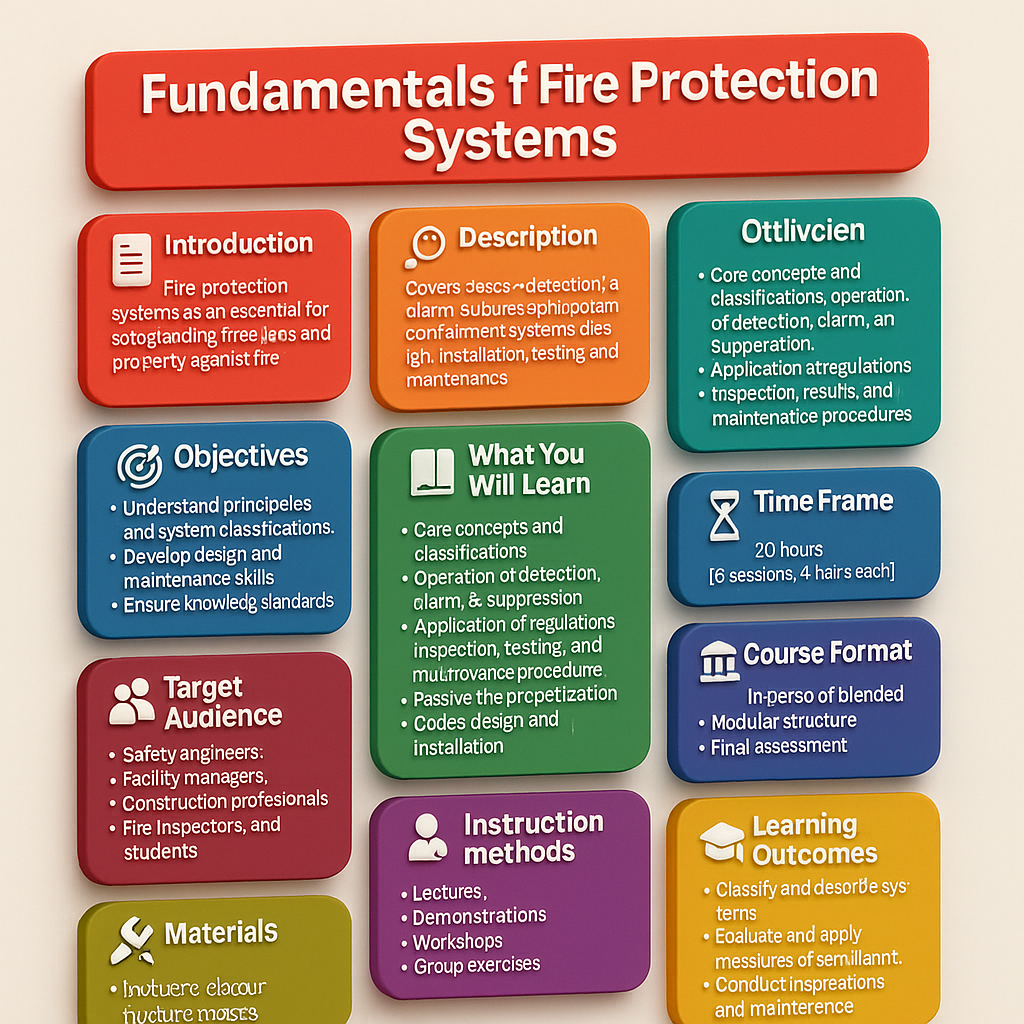
Fire protection systems are vital components in safeguarding lives and property against fire hazards. This course introduces the fundamental concepts, types, operation, and maintenance of fire protection systems used in various settings, with a focus on both active and passive measures.
The course covers the science and engineering behind fire protection, including detection, alarm, suppression, and containment systems. Learners will explore standards, system design, installation requirements, testing protocols, and maintenance strategies, emphasizing compliance with national and international codes.
To provide a thorough understanding of fire protection principles and system classifications
To familiarize participants with the components and functioning of fire detection and suppression systems
To develop skills in the design, operation, and maintenance of fire protection systems
To ensure knowledge of regulatory standards and inspection procedures
Principles of Fire Protection
Fire behavior and growth
Risk assessment and mitigation strategies
Types of Fire Protection Systems
Active (sprinklers, alarms, extinguishers)
Passive (compartmentation, fire-resistant materials)
Fire Detection and Alarm Systems
Smoke, heat, flame detectors
Notification devices and control panels
Fire Suppression Systems
Water-based (sprinkler, deluge, mist)
Gaseous and chemical suppression
Portable extinguishers
Passive Fire Protection
Fire barriers, doors, dampers
Structural fireproofing
Codes, Standards, and Regulations
NFPA, EN, ISO, local codes
System certification and documentation
Design and Installation
System layout and hydraulic calculations
Installation best practices
Inspection, Testing, and Maintenance
Routine checks, troubleshooting
Documentation and compliance reporting
Core concepts and classifications of fire protection systems
Operation of detection, alarm, and suppression equipment
Application of regulatory codes and standards
Inspection, testing, and maintenance procedures
Design and installation principles for new and existing buildings
Safety engineers and fire protection specialists
Facility managers and building owners
Construction professionals and architects
Fire inspectors and code enforcement officers
Students in fire safety or building services engineering
Comprehensive course handbook and code excerpts
System schematics and technical datasheets
Case studies and interactive exercises
Access to simulation software
Lectures and technical presentations
Demonstrations and virtual simulations
Hands-on workshops (where applicable)
Group discussions and compliance exercises
Duration: 20 hours (5 sessions, 4 hours each)
In-person or blended (online + practical)
Modular structure for flexibility
Final assessment and certification
Upon completion, participants will:
Classify and describe various fire protection systems
Evaluate and apply detection, suppression, and passive measures
Design and assess system layouts in accordance with standards
Conduct routine inspections and maintenance for compliance
